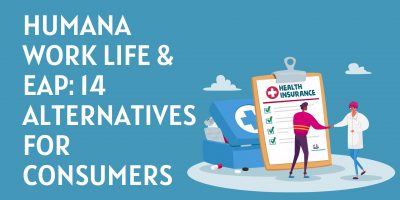
30+ Egg Freezing Statistics
Explore egg-freezing statistics and trends that offer valuable insights into the dynamic landscape of fertility preservation.

Voluntary benefits have become a reflection of the evolving employee-employer relationship. Their growing demand signals а necessity for personalized support, greater financial security, and a more holistic approach to well-being over simply addressing basic workforce needs.
Therefore, meeting 2025 goals such as better retention, attracting top talent, or improving productivity might require more than the all too familiar “competitive salaries” and basic health insurance.
As we turn to complementary benefits to fill in the gaps, let’s see how their flexible, employee-centric approach pushes compensation packages from the traditional, one-size-fits-all model to one that empowers workers to achieve wellness, financial, and career goals.
Voluntary benefits are optional perks (products or services) that employers offer in addition to their main benefits. They are often at discounted rates, and the costs for opt-in employees are typically shared through payroll deductions.
Examples include life insurance, gym memberships, dental and vision insurance, mental health services, financial planning services, flexible work schedules, and more.
For a long time, these were considered “add-ons” to core benefits like retirement plans and health insurance.
However, they are now taking on a more central role in the workplace.
So, why is there a sudden rise in voluntary benefits?
Gallagher’s 2024 Well-being and Voluntary Benefits Survey reveals that 77% of employees consider them an essential part of a comprehensive benefits plan, and two-thirds would switch jobs for better benefits.
At the same time, 61% of employers plan to expand these offerings, and 74% see direct cost savings from them.
Fundamentally, they’ve become employers’ response to the growing needs of a diverse workforce.
These perks strengthen compensation packages without significant cost increases and help companies attract and retain talent, all while supporting many aspects of employees’ work and personal lives.

Goal: Improve productivity and create a stress-free workplace.
Achieving financial wellness requires providing employees with comprehensive resources to manage their debt, build savings, and take control of their financial future.
Competitive salaries, while helpful, can’t always address the full spectrum of needs.
Out-of-pocket medical costs or unexpected emergencies can cause significant financial strain, accompanied by stress and anxiety.
In fact, according to PwC’s Employee Financial Wellness survey, 60% of full-time workers were stressed about their finances. This trend negatively affected their productivity, and they were nearly five times more likely to report this as a work distraction.
Gallagher’s research on voluntary benefits also shows that 92% of workers want better financial support, an increase from 79% in 2022. Employers seem aware of this, as 72% planned to address the economic aspect of employee well-being.
For those planning their 2025 productivity strategies, there are two ways to approach this.
The first is through improving financial literacy:
The other option includes voluntary benefits for employees who need direct financial support:
Corporate Student Loan Programs: Marsh McLennan’s research on the evolving workforce shows the growing importance of this perk among millennials, who believe employers should help them “lighten the load” of student debt.




Goal: Increase employee engagement and retention.
Boosting well-being requires abandoning the blanket approach and expanding health and wellness benefits to address individual employee needs.
Circling back to Gallagher’s findings, four crucial areas stand out:
1) With rising medical and pharmacy costs, employees struggle to pay medical bills. In fact, 56% say costs will delay or limit their access to healthcare, and 31% want more help with these expenses.
2) There are gaps in mental well-being. Workers want benefits to improve this, including support for stress and burnout (52%), anxiety and depression (40%), and better sleep (35%).
3) Cancer has surpassed musculoskeletal conditions as the leading driver of healthcare costs for large companies. In response, employers are broadening their support for treatment and prevention.
4) Employees want more support with weight loss. Nearly one in three want more health benefits that tackle obesity, especially among Gen X.
Healthcare support has always been a top priority, and now it’s just expanding.
The good news is that employers are listening, and 86% agree that voluntary benefits are crucial to their well-being strategies.
Beyond increased awareness, the study also indicates a positive correlation between well-being and employee engagement and retention, making voluntary health and wellness benefits an integral part of any 2025 resolution.




Goal: Improve recruitment and support DE&I.
“The future of work is about equity,” illustrates findings from the Marsh McLennan report.
Family planning, women’s health, and reproductive benefits play a major role in this and have become vital in compensation packages.
Moreover, the report reveals that family-building and caregiving benefits have become especially important for Millennials and Gen X, who seek to balance career goals with personal and family responsibilities.
Examples of this are:
According to recent data from IFEBP, companies are also considering more fertility and adoption options, which include:
IFEBP indicates that these support attracting and retaining talent, healthcare cost savings, improving diversity, equity, and inclusion, and the overall well-being of the workforce.
Goal: Remain competitive and promote growth.
As industries evolve and new technologies emerge, staying current becomes both a challenge and a priority.
Educational assistance, skill development programs, and mentorship are essential for maintaining organizational competitiveness and growth, especially given the rapid technological advancements we’re experiencing right now.
LinkedIn’s 2023 Workplace Learning Report reveals that workers, too, value these initiatives as they help them achieve their professional goals.
In fact, their primary motivation to learn was to progress toward a career goal, followed by staying current in their fields.
The data also shows that career pathing leads to employee retention, as workers rank “career growth opportunities and learning” and “developing new skills” among the top five reasons they’d consider another job.
Goal: Drive performance and improve company culture.
Flexible work is no longer a temporary trend but a lasting shift in how we approach the workplace. It also seems to be among the few benefits the workforce agrees upon, besides the core ones like healthcare and retirement plans.
Forbes’s workplace benefits trends by generation show that 79% of all employees prioritize flexible benefits, while millennials and Gen Z rate them even higher, at 84% and 83%, respectively.
As burnout rates surge, research also reveals that flexibility becomes a key driver of company culture and productivity.
On the one hand, employees dissatisfied with their workplace policies were 43% likelier to experience burnout.
On the other hand, schedule flexibility was linked to higher productivity, with significant gains seen among workers with more control over their hours.
Employees also reported they feel equally or more likely than fully in-office employees to connect to their teams, managers, and company values and cited flexible work policies as the top factor in improving company culture.
Goal: Keep up with the evolving workforce.
Customizing benefits in 2025 means creating compensation packages also to meet employees’ goals.
Adding to an already considerable list of voluntary benefits for employees and their ever-expanding needs, companies can offer solutions that further personalize the workplace experience.
For example:
The bottom line is that there are no more one-size-fits-all solutions.
Employees want flexibility and choice, better healthcare options, financial planning, wellness programs, and more.
However, as options expand, this can also be confusing and overwhelming.
NFP’s U.S. Benefits Trend Report shows that a third of employees are not confident in choosing the best benefits for themselves and their families.
Therefore – as one final solution for employers who want to support their 2025 goals – integrating an employee benefits platform and providing clear benefits navigation can make this process easier for everyone.
Additionally, clear communication and a well-structured guide to employee benefits access can simplify the experience, helping workers select the voluntary benefits that best fit their needs.
Disclosure: Some of the products featured in this blog post may come from our partners who compensate us. This might influence the selection of products we feature and their placement and presentation on the page. However, it does not impact our evaluations; our opinions are our own. The information provided in this post is for general informational purposes only.
Content Writer at Shortlister
Browse our curated list of vendors to find the best solution for your needs.
Subscribe to our newsletter for the latest trends, expert tips, and workplace insights!

Explore egg-freezing statistics and trends that offer valuable insights into the dynamic landscape of fertility preservation.

Explore alternatives to Humana’s EAP and work-life services, providing consumers with a list of the top vendors offering EAP and work-life benefits.

Uncover the latest insights into child care in the US with our 40+ essential statistics, providing a detailed look at the state of child care services, accessibility, and family dynamics.

The high cost of child care, coupled with the pressure it puts on working parents and its long-term effects on employee productivity and retention, is why we need to look closely at the importance of child care benefits for parents.
Used by most of the top employee benefits consultants in the US, Shortlister is where you can find, research and select HR and benefits vendors for your clients.
Shortlister helps you reach your ideal prospects. Claim your free account to control your message and receive employer, consultant and health plan leads.